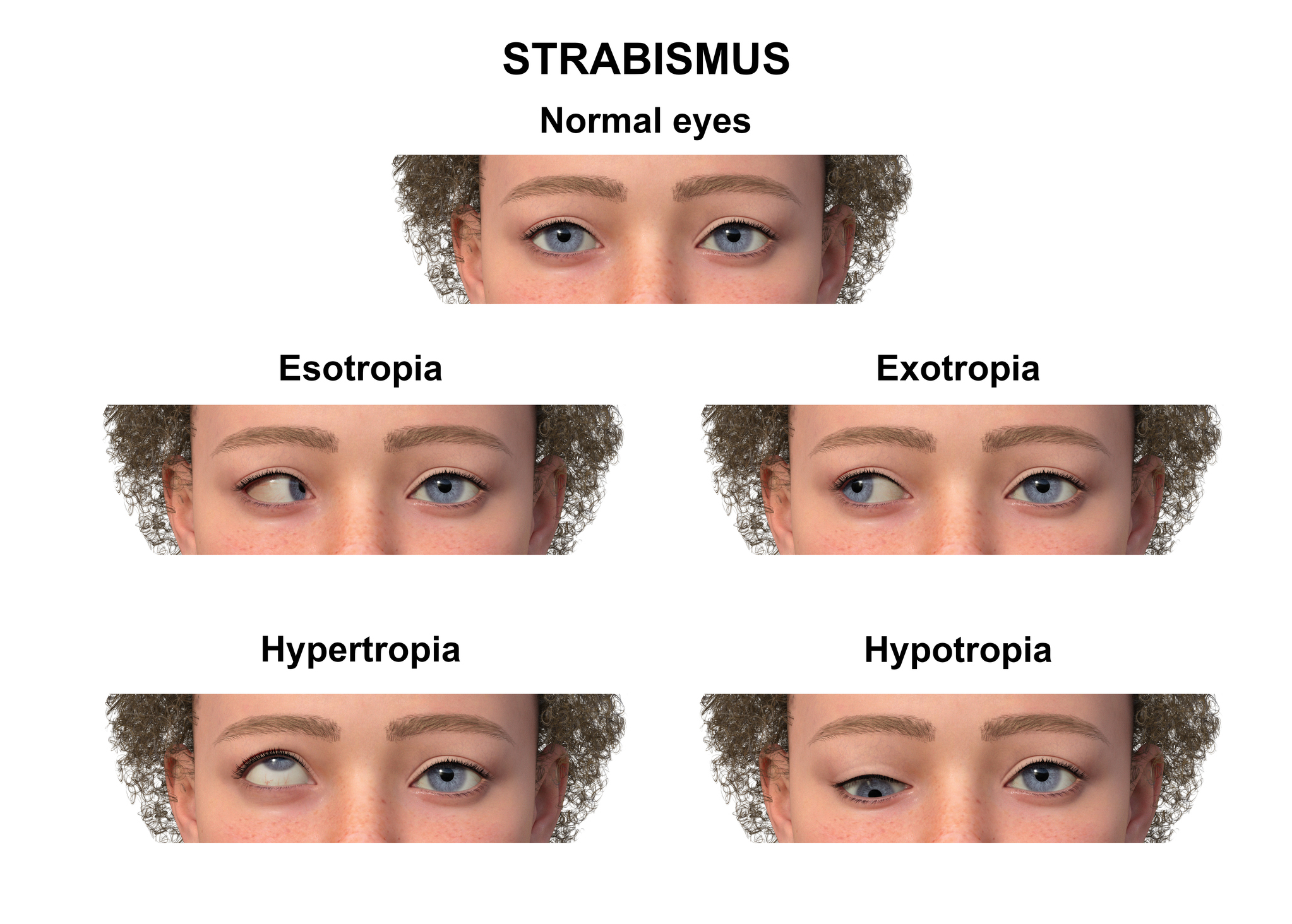
Strabismus Explained: What You Need to Know About Crossed Eyes
Olympic gymnast Stephen Nedoroscik took the world by storm after his pommel horse routine, and ultimately helped Team USA land the bronze medal. He’s now referred to as the “Clark Kent” of gymnastics because Nedoroscik takes off his glasses for his routine, working by feel. He revealed it’s because of his eye conditions—strabismus and coloboma—which severely impairs his eyesight without his glasses.
Marielle Young, MD, chief of pediatric ophthalmology at the John A. Moran Eye Center, answers questions about strabismus.
What Is Strabismus
Strabismus is a condition where the eyes are misaligned. Instead of working together as a team, one eye may turn inward, outward, upward, or downward. This misalignment can cause significant vision issues as well as emotional distress, especially in teenagers and young adults.
Different types of strabismus are named based on the direction the eye turns:
- Esotropia: One or both eyes turns inward towards the nose
- Exotropia: One or both eyes turn outward towards the ear
- Hypertropia: One eye moves up out of alignment
- Hypotropia: One eye moves down out of alignment

What Causes Strabismus?
It’s not known what causes strabismus. In many cases, the disease runs in families, but genetics is not the only factor. Strabismus can also develop due to trauma or stroke.
Farsightedness (hyperopia) is also a cause of strabismus. When children with significant farsightedness try to focus, their eyes may cross inwards to bring an image into focus.
Who Is at Risk of Developing Strabismus?
Children are often born with this condition, although it can also develop in childhood or adulthood. Early intervention is crucial because untreated strabismus in children can lead to permanent vision problems, including lower visual acuity, even with glasses, or the ability to use eyes together.
“Strabismus can persist into adulthood, either because it was never treated in childhood or because it developed later due to age or trauma,” Young says. “Adults with new strabismus usually experience double vision.”
What Are the Treatment Options?
Whether detected in childhood or adulthood, treatment is possible.
“When you have constant strabismus as a child, the eye that is crossed does not develop normal visual acuity,” Young says. “This loss of acuity is called amblyopia and is only treatable in childhood.”
Treatment for strabismus depends on the severity and underlying cause. Treatment options include:
- Glasses: For many children, corrective lenses significantly improve eye alignment by addressing refractive errors like farsightedness.
- Penalization therapy: “Penalizing” the good eye, by using patches, eye drops, or using VR headsets that blur the image in the good eye, can help the crossed or weaker eye develop normal vision. As the crossed eye’s vision gets better, the eye’ alignment can improve.
- Surgery: If glasses and therapy are insufficient, surgical intervention may be necessary. This surgery changes the position or length of the eye muscles to improve ocular alignment. While often successful, some individuals may require multiple surgeries over their lifetime.
Addressing Emotional and Social Challenges
Strabismus is not just a physical condition; it can also have profound psychological effects. Children and adults with strabismus may experience social stigma, low self-esteem, and difficulties with social interactions.
“Children and young adults can internalize strabismus much more than they want to admit and often cope by not making eye contact or becoming withdrawn,” Young says.
Strabismus can also affect sports and other activities. While many children adapt to strabismus and thrive, those with severe misalignment may find it challenging to engage in sports that require precise visual coordination.
It’s important for parents and caregivers to recognize the emotional and social impact of strabismus. Encouraging treatment and addressing concerns can significantly improve a child’s confidence and social interactions. Early intervention and treatment can allow normal visual development, prevent long-term psychological effects, and improve overall quality of life.
The Basics: Vision Screening for Young Children
A majority of children will not develop 20/20 vision until they are four to six years old. During those first few years, what should parents do to make sure their kids maintain healthy vision?
More Answers to Your Questions on Keeping Your Kid Healthy and Happy
Latest trends and issues in children's health on the Healthy Kids Zone with Dr. Cindy Gellner






